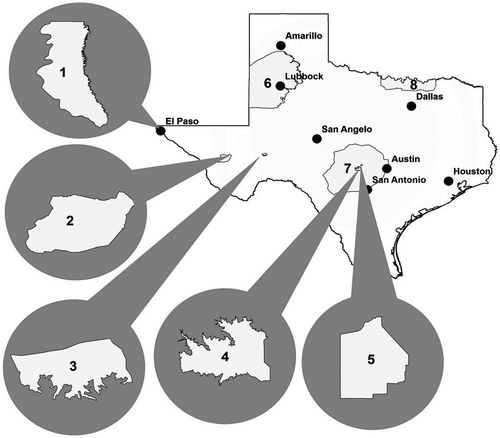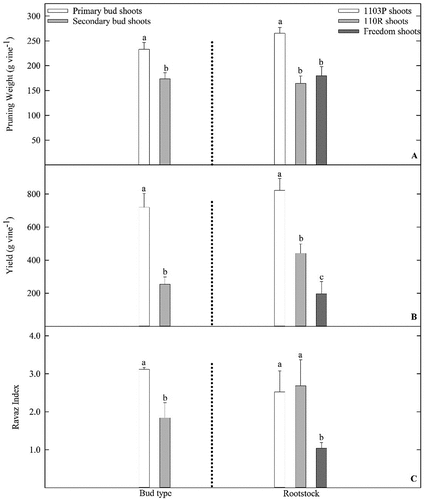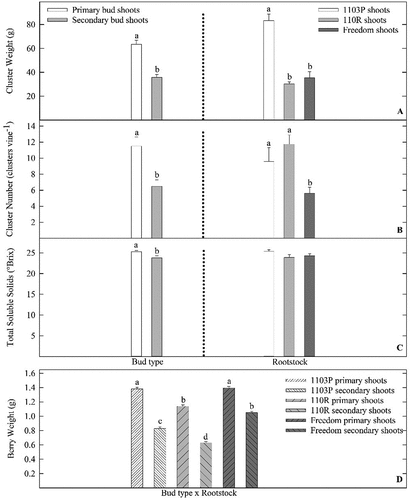Figures & data
Figure 1. Location of the eight American Viticultural Areas (AVA) in Texas: 1) Mesilla Valley, 2) Texas Davis Mountains, 3) Escondido Valley, 4) Fredericksburg in the Texas Hill Country, 5) Bell Mountain, 6) Texas High Plains, 7) Texas Hill Country, and 8) Texoma (Takow et al., Citation2013).

Table 1. Annual growing degree day (GDD) accumulation, precipitation, minimum temperataure, maximum temperature, mean minimum temperature, and mean maximum temperautre from an on-site weather station located at the Texas AgriLife Experiment Station (Lubbock, TX) during the 2016 and 2017 growing seasons. In addition, secondary shoot pruning date and harvest date for ‘Vitis vinifera ‘Grenache’ grafted to grafted to 1103P, 110 R, and Freedom rootstocks each growing season
Figure 2. Influence of primary shoot treatment (PST) or secondary shoot treatment (SST) bud shoot growth and rootstock on cane weight (A), vine yield (B), and Ravaz Index (C) of Vitis vinifera ‘Grenache’ vines grown on 1103P, 110 R, and Freedom rootstocks at the Texas AgriLife vineyard in Lubbock, TX. Data pooled from 2016 and 2017 growing seasons. Letters above each bar represent differences between bud type, or rootstock (LS Means, Tukey–Kramer test, P ≤ 0.05.). Only main effects (no bud type x rootstock interaction) presented. Errors bars represent SE of the mean.

Figure 3. Influence of primary shoot treatment (PST) or secondary shoot treatment (SST) bud shoot growth and rootstock on cluster weight (A), number of cluster from each vine (B), and berry total soluble solids (°Brix) (C) of Vitis vinifera ‘Grenache’ vines grown on 1103P, 110 R, and Freedom rootstocks at the Texas AgriLife vineyard in Lubbock, TX. In addition, influence of bud type x rootstock interaction on individual berry weight (D). Data pooled from 2016 and 2017 growing seasons. Letters above each bar represent differences between main effects (A, B, C), or bud type x rootstock interaction (D) (LS Means, Tukey–Kramer test, P ≤ 0.05.). Errors bars represent SE of the mean.

